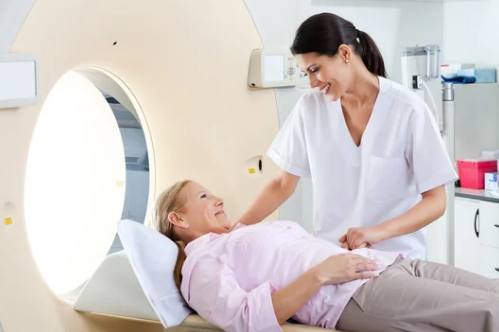MRI-guided surgeries are transforming the landscape of modern medicine by providing surgeons with real-time, high-resolution images during procedures. These innovations allow for unprecedented precision, reducing risks, shortening recovery times, and improving patient outcomes. At the heart of this transformation lies advanced visual technology, which bridges the gap between raw imaging data and actionable surgical guidance.
What is MRI-Guided Surgery?
MRI-guided surgery combines the detailed imaging capabilities of Magnetic Resonance Imaging with surgical techniques to assist doctors in precisely locating, targeting, and treating medical conditions. Unlike traditional imaging methods, MRI offers superior soft-tissue contrast without ionizing radiation, making it ideal for delicate procedures such as brain surgery, tumor removal, and certain orthopedic interventions.
In these procedures, the MRI scanner acts like a live GPS for the body, guiding surgeons with clear, updated visuals as they operate.
The Role of Visual Technology in MRI-Guided Surgeries
1. Real-Time Imaging
Visual technology enables continuous, real-time imaging so surgeons can track instruments, monitor tissue changes, and confirm the complete removal of a tumor before closing the incision.
2. Augmented Reality Overlays
AR can project MRI data directly onto the surgical field, allowing surgeons to “see” beneath the surface without making large incisions. This visual overlay improves spatial awareness and accuracy.
3. 3D Reconstruction
MRI images can be transformed into 3D models of the patient’s anatomy. Surgeons can rotate, zoom, and virtually navigate these models to plan the safest surgical path.
4. Enhanced Instrument Tracking
Specially designed surgical instruments are tracked within the MRI environment, and their positions are displayed visually, ensuring precise movements even in complex areas.
Benefits of Visual Technology in MRI-Guided Surgeries
Greater Precision
Surgeons can pinpoint target areas with sub-millimeter accuracy, minimizing damage to surrounding healthy tissue.
Reduced Risk
Real-time feedback ensures any complications, such as unexpected bleeding or tissue shifts, are detected instantly.
Shorter Recovery Times
Smaller, more accurate incisions mean less trauma for the patient and quicker healing.
Better Outcomes
By removing guesswork, visual technology improves the likelihood of complete treatment success—particularly in cancer and neurological surgeries.
Key Technologies Powering MRI-Guided Visuals
- High-Resolution MRI Systems – Offering ultra-clear anatomical detail.
- AI-Assisted Image Analysis – Detecting anomalies and enhancing image clarity during surgery.
- Interactive Surgical Displays – Large touchscreens or head-mounted displays showing real-time data.
- Fiber-Optic Tracking Systems – Mapping surgical tool positions in the MRI environment.
- Holographic Imaging – Allowing surgeons to “walk through” anatomy before and during surgery.
Challenges in Implementing Visual MRI Surgery Technology
While powerful, these technologies come with challenges:
- High Costs – MRI-compatible equipment and operating rooms require significant investment.
- Workflow Adjustments – Surgeons and staff must adapt to the slower pace of MRI imaging compared to traditional surgical tools.
- Training Requirements – Complex visual systems require specialized training to ensure optimal use.
- Magnetic Safety – All tools must be non-ferromagnetic, limiting equipment choices.
Future Trends in Visual MRI-Guided Surgeries
The future points toward smarter, more immersive visual tools, including:
- Fully immersive AR and VR surgery simulations for training and pre-surgery planning.
- AI-driven predictive modeling to anticipate complications before they occur.
- Portable MRI systems to bring high-quality imaging into more operating rooms worldwide.
- Robotic integration for automated precision guided by MRI visuals.
Conclusion
Visual technology in MRI-guided surgeries is not just an enhancement—it’s a game-changer. By combining real-time imaging, 3D modeling, and augmented reality, surgeons are now equipped with unparalleled insight into the human body during operations. This leads to greater accuracy, safer procedures, and improved patient outcomes.
As technology evolves, we can expect MRI-guided surgeries to become even more precise, less invasive, and more widely available—ushering in a new era of surgical excellence.
If you like, I can now prepare SEO keywords, meta title, and meta description so this article ranks highly for terms like MRI-guided surgery technology and real-time surgical imaging. That would make it ready for publishing.
Also Read :
